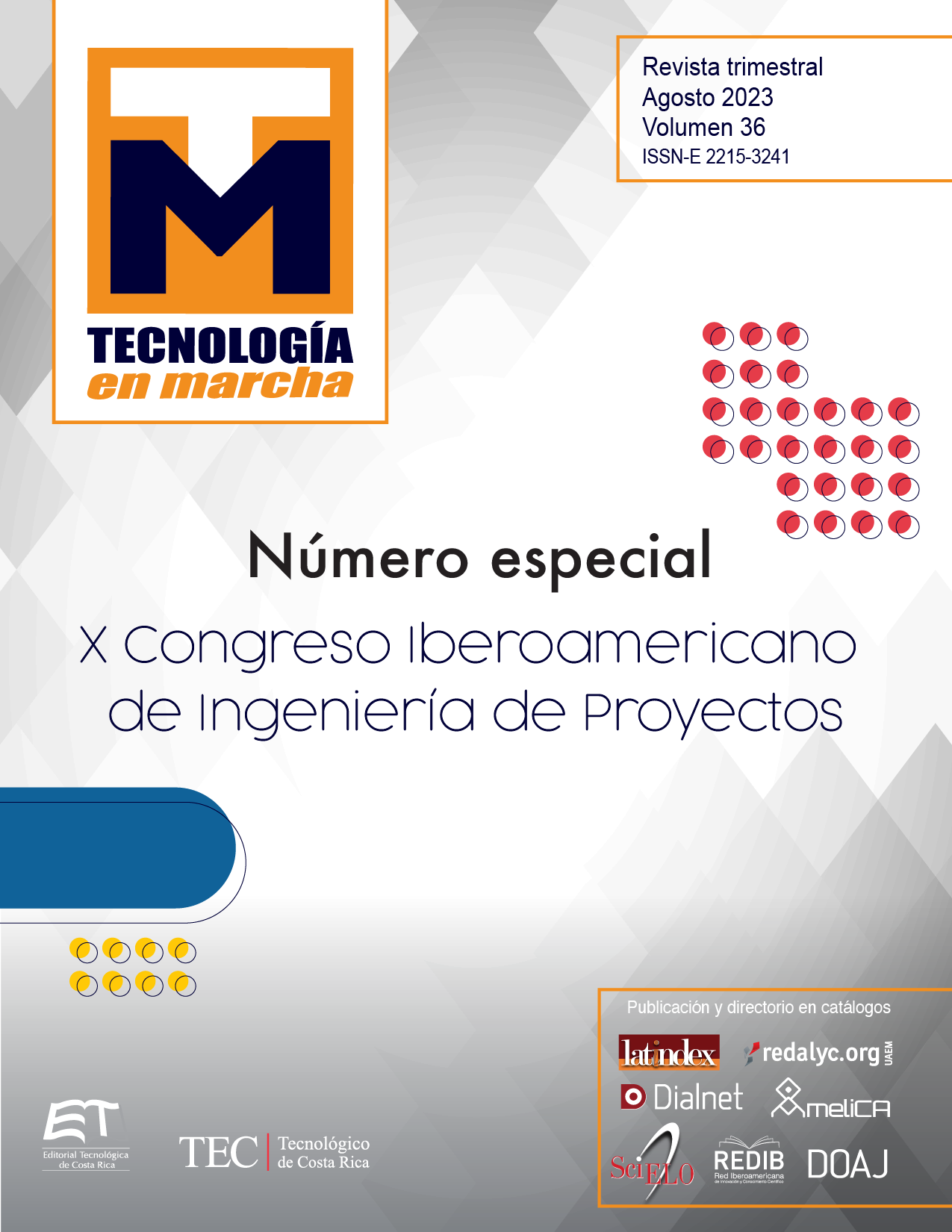Teaching spatial planning as a tool in project management for public infrastructure
Main Article Content
Abstract
Spatial planning seeks to organise land uses within a territory sustainably, trying to minimise conflicts between them. By its nature, it is an interdisciplinary field related not only to physical aspects of the territory but also to public policies, citizen participation and institutional regulations. Furthermore, the efficient organisation of the city facilitates public infrastructure management and reduces bureaucratic processes. This paper aims to present an experience of eight years of teaching planning for the Topographic Engineering degree at the University of Costa Rica; it explores experiences using different didactic techniques. Methodologically, this work is based on assessments of teaching performance from 2010 to 2021 (with a four-years gap), from a course focused on planning; these appraisals were carried out every six months and were completed by students anonymously. This information is complemented by the experiences of university lecturers who have included aspects related to planning in their modules. Finally, through qualitative analysis, this paper aims to show didactic strategies that have been best adapted to the learning objectives from the modules, as well as to make visible the importance of teaching planning to speed up the processes of public investment in the city. Among the main findings are the effectiveness of field visits, the use of Geographic Information Systems in the classroom and the use of collaborative tools in teaching territorial issues in engineering.
Article Details

This work is licensed under a Creative Commons Attribution-NonCommercial-NoDerivatives 4.0 International License.
Los autores conservan los derechos de autor y ceden a la revista el derecho de la primera publicación y pueda editarlo, reproducirlo, distribuirlo, exhibirlo y comunicarlo en el país y en el extranjero mediante medios impresos y electrónicos. Asimismo, asumen el compromiso sobre cualquier litigio o reclamación relacionada con derechos de propiedad intelectual, exonerando de responsabilidad a la Editorial Tecnológica de Costa Rica. Además, se establece que los autores pueden realizar otros acuerdos contractuales independientes y adicionales para la distribución no exclusiva de la versión del artículo publicado en esta revista (p. ej., incluirlo en un repositorio institucional o publicarlo en un libro) siempre que indiquen claramente que el trabajo se publicó por primera vez en esta revista.
References
A. I. Frank, & A Rosa Pires da. Introduction: transformational change in planning education pedagogy? En Teaching urban and regional planning: innovative pedagogies in practice, Frank, A. I., & Rosa Pires, A. da. Eds.Northampton: Edward Elgar Publishing, 2021.pp 1-18.
Zhang, P. Changes in Modern Urban Planning Teaching and Theory. Open House International, vol, 44(3), 2019, pp.40-43. Recuperado de: https://www.proquest.com/scholarly-journals/changes-modern-urban-planning-teaching-theory/docview/2316972937/se-2
A. Madanipour, “Researching Space, Transgressing Epistemic Boundaries”. International Planning Studies, vol 18(3-4), 2013, pp.372–388.
D. Dominguez, B. Truffer, & W. Gujer. “Tackling uncertainties in infrastructure sectors through strategic planning: the contribution of discursive approaches in the urban water sector”. Water Policy, vol 13(3), 2011 pp. 299–316. https://doi.org/10.2166/wp.2010.109
Malekpour, S., Brown, R. R., & de Haan, F. J. “Strategic planning of urban infrastructure for environmental sustainability: Understanding the past to intervene for the future”. Cities, vol 46, 2015, pp. 67–75. https://doi.org/10.1016/j.cities.2015.05.003
Yin, R. Case study research: Design and methods. (5th ed.). Los Angeles -London: SAGE. 2014.
C. Burck, “Comparing qualitative research methodologies for systemic research: the use of grounded theory, discourse analysis and narrative analysis”. Journal of Family Therapy, vol 27(3), 2005, pp.237–262.
K. Barrantes-Chaves, “Rastro de plática: una propuesta metodológica para mapear del temor al delito”. REVISTARQUIS, 10(2), 2021 pp.101–123. https://doi.org/10.15517/ra.v10i2.45421
L. T.. Alvao-Saenz, J. Quintero-Salazar & A. M. Ramírez Rubio, 2020. Captura la idea: Actividad lúdica para la enseñanza y fortalecimiento del pensamiento de diseño. I+D Revista de Investigaciones, vol 16(1), 2020 pp.28–44. https://doi.org/10.33304/revinv.v16n1-2021003
PEN. “Informe Estado de la Educación”. Programa Estado de la Nación-CONARE. 2021. Recuperado de: https://estadonacion.or.cr/wp-content/uploads/2021/09/Educacion_WEB.pdf [Accesado: 21 Septiembre 2021].

